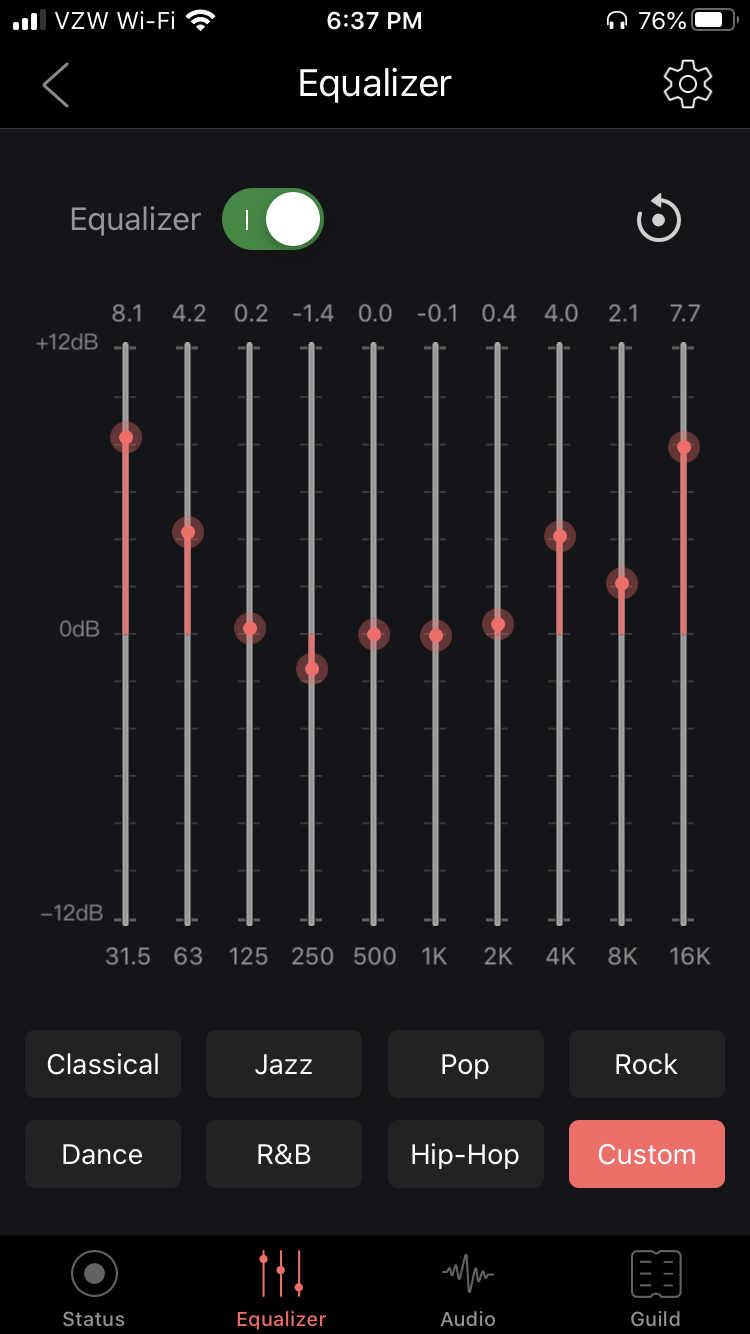punkedrock
100+ Head-Fier
Would one just want to achieve the flattest response from somebody else's chart? Or do people actually manage to measure their own headphones on the cheap?
I found the following website: https://www.rtings.com/headphones/1-4/graph#816/3992
Now based of this graph for the Sennheiser HD660S would I just adjust my DAC/AMP's EQ settings (FiiO Q5S) or my Sony Walkman NW-ZX507 (Arriving tomorrow.) and try and have the flattest response possible?
Well in car audio we usually want a downward curve on the graph, so I'd like some input if I should be going for this or a flat curve... I'm very inexperienced in tuning in general and even more so when it comes to headphones.

I think... I think this is my EQ graph for the FiiO Q5S DAC/AMP after following that chart I showed you guys going after a flat frequency response based on the chart from www.rtings.com for the HD660S
I found the following website: https://www.rtings.com/headphones/1-4/graph#816/3992
Now based of this graph for the Sennheiser HD660S would I just adjust my DAC/AMP's EQ settings (FiiO Q5S) or my Sony Walkman NW-ZX507 (Arriving tomorrow.) and try and have the flattest response possible?
Well in car audio we usually want a downward curve on the graph, so I'd like some input if I should be going for this or a flat curve... I'm very inexperienced in tuning in general and even more so when it comes to headphones.

I think... I think this is my EQ graph for the FiiO Q5S DAC/AMP after following that chart I showed you guys going after a flat frequency response based on the chart from www.rtings.com for the HD660S
Last edited:


